 U.S. Rep. Teresa Leger Fernández, who represents the state’s 3rd Congressional District and much of Northern New Mexico, appeared at an Oct. 7, 2025 news conference, celebrating state lawmakers’ push to establish permanent funds for acequias and land grant mercedes in the upcoming legislative session. (Danielle Prokop / Source NM) BY: DANIELLE PROKOP
Courtesy of Source NM As climate-fueled disasters cause mounting damages to New Mexico’s acequias amid rising costs, leadership from traditional ditch communities and land grant-mercedes say they need state help. Those leaders discussed the issue on Tuesday in front of the state Roundhouse, as Democratic lawmakers previewed legislation for next year’s session that would establish two muli-million dollar funds to help pay infrastructure costs for dam repairs and debris removal, as well as for affordable housing developments on community-owned land. “It’s more than a bill, it’s a promise,” said Sen. Leo Jaramillo (D-Española). “It creates a permanent fund so our New Mexico’s historic land grant and acequia communities can invest in our future, clean water and strong local infrastructure; more so in rural New Mexico where we need it the most.” Similar legislation brought in 2025 — House Bill 330 — advanced through House committees and a floor vote, but stalled in the Senate Finance Committee. The bill, which would have dedicated $5 million in two funds for both acequias and land grant-mercedes, simply “ran out of time,” Jaramillo said. “I’m very optimistic for it to pass this year,” he said. But while acequias and land-grant mercedes count as government entities in law and predate New Mexico’s statehood by hundreds of years, their ability to obtain state or federal funding remains a challenge. Since 2022, fires and flooding — including millions in damages to dozens of canals in September — have devastated more than 200 acequias across the state, said Paula Garcia, the executive director of the New Mexico Acequia Association. “With about 700 in the state that means one in four acequias is in crisis from some kind of climate disaster,” she said. Garcia said uncertainty about receiving U.S. Federal Emergency Management Agency funds and challenges navigating the state’s disaster funding creates a continued level of precarity as calamities pile up. “It seems like every time there’s a disaster, we’re starting from scratch,” Garcia told Source NM. “Now having a funding source would be a game changer because we wouldn’t be scrambling every time there’s a disaster on how we’re going to piece together that recovery money.” U.S. Rep. Teresa Leger Fernández, who represents the state’s 3rd Congressional District and much of Northern New Mexico, said she’s had to repeatedly “educate” federal agencies to get funding for acequias, and said this pool of funding may offer chances to seek federal grants in the future. “When the State of New Mexico passes legislation like this that not just builds upon the recognition, but says, ‘we are going to provide the funding at these levels, then they can go and seek matching funding from the federal government,’’ said Leger Fernández, who was in the state rather than Washington, D.C., due to the ongoing federal shutdown. “That’s why what the legislators have done today is so essential — because we want to multiply, as much as possible, the funding that comes into rural communities.”
0 Comments
Contact: Becca Fisher, Abiquiú Arts Council | [email protected] Date: October 10, 2025 Abiquiú, NM — The much-anticipated Abiquiú Studio Tour returns this weekend, October 11, 12 & 13* from 10 AM to 5 PM, inviting art lovers, collectors, and curious travelers alike to experience the creative pulse of northern New Mexico. This self-guided driving adventure opens the doors of over 60 working artists’ spaces & galleries, where visitors can witness the intimate origin of creation. From painting and pottery to textiles, jewelry, and sculpture, the diversity of work reflects the beauty, culture, and inspiration of the land itself. As you wind through the breathtaking landscapes and golden yellow cottonwood trees that inspired generations of artists, you’ll find that each stop offers not just art to collect, but stories to carry home. Plan Your Tour: Maps, studio listings, and artist bios are available at abiquiustudiotour.org, and printed map brochures will be available at every stop. You can also download the Toureka app for an interactive, digital guide to plan your route, save your favorite stops, get directions, and explore with ease. Visit your app store to download today! Follow along on Instagram @abiquiuartscouncil for updates, artist highlights, and stunning glimpses of the tour in motion. Come explore the art, the land, and the spirit of Abiquiú this weekend—where creativity and community meet under the New Mexico sky. *Limited stops are open on Monday, 10/13. Please check artist listings and plan accordingly. Ways to Support: Support Local & Share: Bring friends, share & tag your favorite discoveries on social media, and let others know about this unique weekend. Email Newsletter: Sign up via our website or here to stay in the loop on future exhibitions, juried events (like our Abiquiú Gathering of Artisans in spring), workshops, and special calls to the community. Visit our Studio Tour Artist Showcase: On display through December 29 at Abiquiu Inn’s Café Abiquiu. Make a Donation: Visit abiquiustudiotour.org/supporters/ About the Abiquiú Arts Council The Abiquiú Studio Tour is presented by the Abiquiú Arts Council, a 100% volunteer-run nonprofit organization dedicated to supporting and celebrating local artists year-round. In addition to the Studio Tour, the Council also produces the Abiquiú Gathering of Artisans, a juried mercado in late spring, and other community arts programs and initiatives are in the works to connect people and communities through creativity. Learn more at abiquiustudiotour.org By NM Political Report
New Mexico lawmakers have allocated $5.9 million to support in-state public television and radio stations statewide after Congress eliminated federal funding for public broadcasting. The state funding includes $1.7 million specifically for New Mexico PBS, which faced an 18% budget cut totaling $1.7 million for fiscal year 2026 due to the congressional rescission vote, according to Franz Joachim, general manager and CEO of New Mexico PBS. Gov. Michelle Lujan Grisham and the New Mexico Legislature approved the emergency allocation to cover the funding gap that took effect Oct. 1, Joachim said in a statement. The total allocation will support public radio and educational television across the state, including tribal stations identified as most at-risk. “This landmark allocation means children still have PBS Kids and educational resources they can count on, trusted news, arts, and culture are still reaching families in every corner of our state, and our emergency alert system is still active and vigilant when it matters most,” Joachim said. The federal cuts also affected the Corporation for Public Broadcasting, which typically provides forward funding to stations two years in advance to enable long-term planning. The corporation has begun winding down operations following the congressional action, according to the New Mexico PBS announcement. While the state funds cover fiscal year 2026, New Mexico PBS still faces a $1.7 million shortfall for fiscal year 2027 that was also eliminated by the federal rescission. Higher Education Department Secretary Stephanie Rodriguez supported the funding allocation, Joachim said. New Mexico PBS, which operates under the call letters KNME and KNMD-TV, serves New Mexico and the Navajo Nation through five digital broadcast channels and streaming services. The station is co-licensed to the University of New Mexico and Albuquerque Public Schools and has operated for more than 65 years. Cipriano F. Vigil, age 83, of El Rito, NM, passed away peacefully at home, surrounded by his loving family, on September 25, 2025, after a lengthy illness.
Cipriano was preceded in death by his parents, Catalina Dominguez and Ruben Vigil; his son Fred Lopez; stepson Luis Tafoya; sister Betty Vigil; brothers-in-law Tony Vigil and Robert Gurule; and sister-in-law Josie Vasquez. He is survived by his devoted wife of 47 years, Susan Vigil; his children, Cipriano Vigil Jr. (Kimberly) and Felicita Piñon (Alex); and his beloved grandchildren, Marisol Archuleta-Vigil, Alonzo Vigil, Mitzael Piñon, Nehemiah Lopez, and Fabian Lopez and his great-granddaughter, Camila Archuleta. Cipriano leaves behind his siblings: Katherine Pacheco (Gilbert), Judy Vigil, Reyna Gurule, Ruben Vigil (Teresa), Enemias Vasquez (Enselma), and Juan Vasquez, as well as many other cherished family members and friends. Born in Chamisal, NM, Cipriano spent most of his youth there before moving to Los Angeles, where he worked for McDonnell Douglas Aircraft. He eventually returned home to New Mexico, where he devoted his life to music and education. A renowned musician and scholar, Cipriano earned a Ph.D. in ethnomusicology and served for many years as Fine Arts Director and music instructor at Northern New Mexico College until his retirement. Even in retirement, Cipriano continued his passion for music by crafting cigar box guitars and sharing his love of traditional Northern New Mexican folk music. He enjoyed spending time outdoors, especially fishing, and was rarely without his guitar—ready to play wherever he went. The family extends heartfelt thanks to Presbyterian Hospice for their compassionate care and to DeVargas Funeral Home for their support during this difficult time. (Services Pending) Courtesy of Laura Williams-Parrish
James “Jim” Dennis Williams passed away July 24, 2025 in Colorado Springs, Colorado. He was 88. Jim was born May 11, 1937 to Leonard and Genevieve (Miller) Williams in Manning, IA. They later moved to Minneapolis, MN, and then to Menlo Park, CA where he graduated from Menlo-Atherton High School. Jim earned his BS degree in electrical engineering at San Jose State and worked at Hewlett-Packard for 30 years. While there, he eventually took on work with AISES (American Indian Science and Engineering Society) and advocated for minority student access in STEM career paths. He also served in the U.S. Naval Reserve from 1961 to 1969. Jim and his wife Nancy moved to Medanales, NM in 1993 where they appreciated the culture, art and history of the Southwest. They always said it was the people they met who made it special, and they treasured many friendships where they lived. Jim was an accomplished woodworker with a special fondness for Spanish Colonial woodcarving, and he made many fine pieces of furniture over the years. His interest in woodworking also led him to design and produce woodworking tools under his company Timberline Tools. He was sincerely thoughtful about others and very supportive and encouraging in nature. His lifelong passion for learning was amplified by sharing his knowledge with others. Jim is loved and missed by his wife Nancy of Colorado Springs; daughter Laura and husband, William Parrish (Colorado Springs); and son Tom and wife, Diana Golis (Glenwood Springs, CO). His daughter Marya Williams, who loved him dearly, passed away in 2017. No service is planned. The family is honoring him in their memories. By Felicia Fredd, Enchanted Garden Productions I visited a garden-in-progress this week to check on the results of a seeding project that began last year, and what I found was a great surprise: a thick crop of Cowpen Daisy! The project, a recent home build just outside of Tesuque, NM, is situated on a somewhat windswept high point that provides huge landscape views in all directions. The views were the client’s primary attraction to the site. I love views too, but I tend to prefer them from a more private and perhaps ‘grounded’ garden space (see prospect-refuge theory: https://www.archpsych.co.uk/post/prospect-refuge-theory). So, the minimalist emphasis on distant views and spatial openness throughout design planning was an interesting experience for me (I’m practically agoraphobic). Neither are the clients what I would call gardeners. They prefer other forms of strenuous exercise, and have never expressed a desire to change the fundamental character of the surrounding landscape. They accept its spareness and often harsh exposures, and felt they needed only to anchor the building with native plants and to revegetate areas disturbed by construction activity. The area above and behind a retaining wall that supports a sunken patio is one of the zones most disturbed during construction (see photos below). We designed the wall as a long low ‘horizon line’ to emphasize the profile of distant mountains and ridge lines. In that sense, the field behind it also serves as an important foreground design element, and our intention here was simply to restore the original low-growing native grass and wildflower community, for the most part. Seeding for the area was completed last fall - the natural time for grasses to drop ripened seed - and our seeding method was to cast into a thin layer of ¼” Santa Fe Brown crushed gravel. This was an experiment in seeding without hydromulch, tackifiers, straw, matting, etc., while still providing some protection from wind displacement and predation, and to help retain moisture. With supplemental watering last spring, the area flushed with tiny green seedlings, including the targeted native grama grasses. As this is their first growing season in very thin, dry soil, the grasses are still quite small, but what did show up with a bang was Cowpen Daisy (Verbesina encelioides). At first, we didn’t realize the Cowpen Daisy accounted for so much of our spring seedling flush. We hadn’t included it in our seed mix, and unless some of our seed packets from Plants of the Southwest had been mislabeled, the Cowpen Daisy seed must have already been present in the soil. Once we figured that out, we chose to let it stay - reasoning that it would at least provide benefits such as shade and wind protection for the young grasses just beginning to establish. It was a good decision. Now, I don’t think you could convince too many people that native Cowpen Daisy is a proper garden plant. There’s just something about its generic, somewhat rangy leaf texture and form that kind of screams “weed”. Most of the time I’ve seen it up close it’s also been pretty dehydrated. I’ve walked through many crunchy, midsummer, drought-stricken fields of these plants and wouldn’t describe them as “beautiful.” But right now, in full bloom following recent heavy rains, it’s a head-turner. In the specific context of this garden it’s gorgeous - another vivid fall gold seen against a background of crisp sky blue. One of the things that helps change the perception from weed to wonderful is a narrow foreground ‘screen’ planting of irrigated native grasses just above the wall. These help push back the Cowpen Daisy field visually, where it is seen less distinctly as just a wash of golden color rolling into the horizon. The coolest part of this accident is that Cowpen Daisy also happens to be a really important late-summer/early fall nectar and habitat plant for native insects. It’s one of our primary Ecoregion 10 keystone species: https://www.epa.gov/eco-research/ecoregions-north-america. And, with so little work, we gained so much beauty and ecological value - all of which relates back to my previous article, How To Love Your Garden, where I tried to say something about how helpful it is to focus on things that work more effortlessly in the garden, and to build on them. I don’t think it would interest the most content-with-the-basics clients I’ve ever known (they haven’t even filled their seasonal pots), but I’d be tempted to add something like Broom Snakeweed (Gutierrezia sarothrae) to this scene. Though it may sound a little weird, Broom Snakeweed is another rugged self-sustaining native keystone species, and the shift in form and texture would subtly tweak that golden scene into something even more visually intense, while also conveying a bit more intentionality. There’s definitely something about a sense of intentionality and staging that helps make a space feel special - even if it’s just how you frame a view or place a chair. I like to be involved with new garden development for a good 3-4 years, if not longer, because it’s the only way to really get all those studied adjustments and fine-tuning sorted out - the seasonal shifts, the editing, the perfect additions, etc., and the Cowpen Daisy was a great unplanned success to build those things out from. Cowpen Daisy against views of Pajarito Plateau. Retaining wall feature stonework by John Morrison. Moss rock plated circulation pathways by Eduardo Aragon. Another angle showing a bit of 'Blonde Ambition’ Grama Grass in the upper retaining wall beds. South facing view with foreground Little Bluestem planting in their second year. Next Fall, I would hope to see the Cowpen Daisy rolling right through the Little Bluestem grid to join the whole area together visually.
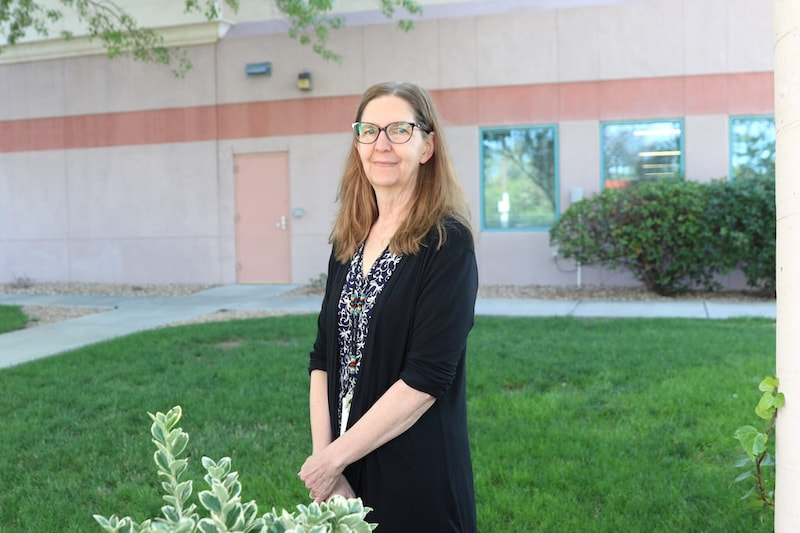 New Mexico Department of Health Chief Medical Officer Dr. Miranda Durham pictured in front of the NMDOH office in Albuquerque on Sept. 29, 2025. Lawmakers plan to take up DOH’s authority to address vaccination policy amidst federal tumult during a special legislative session. (Danielle Prokop / Source NM) During the special legislation session starting Wednesday and focused on federal health insurance and food assistance programs, New Mexico lawmakers also plan to address state laws on vaccine policy.
Current federal tumult over vaccine availability requires providing state officials the flexibility “to set their own standards,” Senate Majority Leader Peter Wirth recently told Source NM. New Mexico Department of Health Chief Medical Officer Dr. Miranda Durham told Source NM she hopes the changes in the law will offer state officials more leeway as federal vaccine policy faces delays and uncertainty. The hope is to “bulletproof” the state’s vaccination policy infrastructure and send clear public health messages, she noted. “We are essentially hoping to just broaden the guidance that we can rely on in making vaccine decisions,” Durham said. Durham pointed to the recent challenges the state faced in offering COVID-19 vaccines. State law requires pharmacies to follow guidelines set by the federal Advisory Committee on Immunization Practices. But under the current federal administration, those guidelines have not been finalized. Thus, the state “was left in limbo,” she said. As such, DOH Secretary Gina DeBlassie issued a public health order on Aug. 29 that directed the state pharmacy board to update its protocols to ease access. Then Durham wrote a statewide prescription for all residents. The situation, Durham noted, illustrated that the state needs to “craft its own recommendations.” Durham pointed to clinical guidancereleased by professional organizations such as the American Academy of Pediatrics or others as a means for the department to craft effective policy guidance for pharmacists and other medical professionals. “[American Academy of Pediatrics] and others have reviewed vaccines independently and just usually come to the same conclusion as ACIP, so we haven’t had conflicting recommendations,” Durham said. “What’s happening with ACIP right now — it’s not meeting in a timely manner and not providing strong evidence-based recommendations.” Recent uncertainty may be worsened by the federal shutdown expected on Oct. 1 if Congress doesn’t pass a budget to fund the government. “I would hope the acting CDC director would be considered an essential worker, but there’s really no way to know,” Durham told Source NM. Durham said having a state policy will also help “screen out the noise” of misinformation about the safety and efficacy of vaccines. “We think the Department of Health is well positioned to be really clear about what’s best for New Mexico. And again, it doesn’t necessarily have to be different than what’s best for other states, but we really do want to focus on that,” Durham said. Other states have also begun charting their own vaccine policies. California, Oregon and Washington announced a public health alliance, while New York declared a disaster, citing the Trump Administration’s limits on the use of COVID-19 vaccinations. By Jarred Conley On June 11, 2025, the Rio Arriba County Board of Commissioners formally recorded a ban on certain fireworks at the County Clerk’s office. The order stated the ban would remain in place “until such time as the Board of County Commissioners determines that the hazardous fire conditions presently existing decreased to a level considered safe for such use.” Just nine days later, on June 20, County Fire and Emergency Services Chief Enrico J. Trujillo issued a full countywide burn ban due to extreme drought. While only the fireworks ban was formally recorded, both measures were shared publicly on social media. These actions were clear and designed to protect the public. Despite these restrictions, the Santa Fe National Forest pursued a different course. On June 25, a lightning strike ignited what became known as the Laguna Fire. By June 30, the fire measured just 176 acres. Allegedly, that initial burn had run up against a cliff and stopped spreading due to natural terrain, which should have provided the Forest Service time to fully secure it. Instead, the agency announced it would “actively manage” the fire, planning to expand it through aerial and hand ignitions across some 13,000 acres. Under policies the Forest Service has created for itself, a “managed” fire does not have to be ignited directly adjacent to the original lightning strike — the ignition area can be a considerable distance away. This distinction gave the agency wide latitude to conduct new burns under the umbrella of wildfire management, even as local bans prohibited residents from lighting so much as a firework. The contradiction could not be sharper. While local residents were barred from lighting even small fireworks or campfires, the federal government proceeded to intentionally ignite thousands of acres of forest. By mid July, the fire had escaped containment lines, forcing firefighters to deploy shelters, and ultimately burning 17,415 acres. Property and livestock were lost, and public confidence eroded again. The Forest Service has consistently circulated photographs that highlight only the low to moderate burn areas, presenting the Laguna Fire as if it were an ecological success. Yet my own photographs document areas where the forest burned at 100 percent, leaving nothing behind. Those images tell a different story, one that is just as much a part of the fire’s legacy as the carefully selected images used in agency updates. While it is true that some areas burned in the way managers intended, no old growth pine, no rancher’s cows, and no wildlife was worth torching in the middle of June to prove a point about “managed fire.” In the end, the Santa Fe National Forest used its own policies and loopholes to prove a point that it can do what it wants, regardless of local restrictions or public cost. This raises a troubling policy question. Under the Prescribed Burn Approval Act of 2016, the Forest Service is prohibited from conducting prescribed burns during “Extreme” fire danger unless coordination with state and local officials occurs. But the Act does not apply to lightning caused wildfires, which can be managed using the same ignition tactics under a different label. That loophole allowed the Laguna Fire to expand well beyond its original footprint, despite county burn restrictions. It is still unclear whether all other federal policy requirements, including coordination and reporting obligations, were met before this strategy was authorized. What is clear is the double standard: county leaders, with fewer resources, enacted and recorded bans to keep residents safe, while the federal government pressed forward with a massive ignition effort in the same extreme conditions. As Brad Butterfield reported in the Rio Grande Sun on September 11, 2025, the fire’s aftermath has left many northern New Mexico homeowners facing an insurance crisis. One resident who built a modern, fire-resistant home on land with virtually no trees still had her policy canceled, despite her efforts to mitigate fire risk. Another saw his annual premium nearly quadruple in just a few years, forcing him into a punishing deductible that would be impossible to cover if a fire actually occurred. These stories show how the Forest Service’s decision to manage, rather than suppress, the Laguna Fire has deepened financial and emotional strain for people who had already followed local restrictions and acted responsibly to protect their properties.
The Laguna Fire is more than a policy failure, it is a reminder of the human cost when federal agencies gamble with fire under extreme conditions. Families who followed county restrictions now face higher insurance bills or no coverage at all, while the agency that expanded the fire shields itself behind a loophole. If trust in fire management is to be restored, Congress must act to ensure that local bans are honored, loopholes are closed, and the people who live with the consequences are finally placed at the center of the decision-making. We have lived in the Abiquiu area (Santa California city, off of NM-554) for nearly two decades, and, up until about one year ago, the air in Abiquiu, based on national air quality maps, has been among the cleanest in the country. However, last fall a sudden shift in air quality occurred in our subdivision. Volatile organic compounds (VOCs), which have never been a significant problem here, began to spike, and have gradually increased over the past 12 months. VOCs are a large class of gases, frequently odorless, that, to quote the Environmental Protection Agency (EPA), include, “human-made chemicals that are used and produced in the manufacture of paints, pharmaceuticals, and refrigerants. VOCs typically are industrial solvents, such as trichloroethylene; fuel oxygenates, such as methyl tert-butyl ether (MTBE); or by-products produced by chlorination in water treatment, such as chloroform. VOCs are often components of petroleum fuels, hydraulic fluids, paint thinners, and dry cleaning agents.” Clandestine drug labs are another source of VOCs as are fracking wells.
The health effects of exposure to VOCs can be very serious. The EPA’s list of effects is too long to reproduce here, but includes everything from headaches and nausea, to central nervous system (CNS) effects, dizziness and fatigue, liver and kidney damage, and cancer risk. We have been monitoring the air quality in our location 24 hours a day using two different detectors. The primary device is called the Atmotube PRO, a portable air quality monitor that connects to an app showing VOC levels and particulates of different sizes. Our monitoring has shown very high levels of VOCs for more than 20 hours per day, every single day without exception. The screenshot shown here from the Atmotube app is typical of the readings we see daily. (FYI, for those looking at the PurpleAir air quality map, the default reporting is for particulates 2.5 micrometers or less, not VOCs.) Clearly, something has changed in the area and we do not know what it is. We have experienced many years of exceptionally clean air and now our air is making us sick. For healthy people, this means fatigue, dizziness, and nausea, but also longer-term risks for far more serious illness. For those with fragile health, the effect of VOCs can be devastating, including CNS effects of dizziness and uncoordinated mental and physical functioning, nausea, stomachache, and other effects that make daily life miserable. There is not a lot of industry in the area, and while we have tried to find the cause with our portable monitor, it is not designed to pinpoint a VOC source, and we have so far failed. That is why we are making this plea for help in finding the cause of this serious air pollution. If you have any knowledge that might help locate the cause, please contact by email at [email protected] or by phone or text at 505 521-6700. We do not know if the source of these gases is someone innocently producing them without realizing the consequences of their actions or people running illegal drug labs or some other source. We promise to keep any contact information you may provide private and will not disclose it to anyone without your permission Please understand that there is a big difference between pollutants in the form of particulates – such as wood smoke or dryer sheets – which can be harmful to one’s health, but which can largely be excluded from the home by keeping windows and doors closed. This is not the case with VOCs, which are not only far more dangerous but, because they are gases, can penetrate walls and get through the tiniest gaps. Our house is well-insulated and has very thick walls, but even taping the doors and windows has done nothing to prevent these gases from getting into the house and poisoning our air. The VOCs we are experiencing are also largely odorless, which means you only know they are with an air quality monitor designed to detect VOCs. Please help us find the cause of these pollutants so we can return the air to its previous healthy condition. Your neighbors in Abiquiu Hello Community Partners,
Espanola Pathways shelter is officially on the City Council agenda for 10/28 at 6pm. The Council will be asked to review our Appeal of the Planning Commission "Motion to Deny Special Use Permit," which occurred on 08/14. The reason the Planning Commission gave for denial was EPS did not satisfy the expectations of being an Emergency Shelter for the Planning Commission. In other words our overnight shelter was not open enough. The procedure that took place that night was austere and arbitrary not only towards EPS staff but also towards City Personnel. We are preparing to open Overnight Services beginning October 28, M-Th 9pm-7am. 24 beds will be available. 10 Men, 10 Women, and 4 Family. We will continue Day Services including showers, meals, case management, counseling, and medical care M-F 9am-5pm. We are requesting support from the community to advocate that the City Council to overturn the Planning Commission decision and reinstate the Special Use Permit for Espanola Pathways Shelter. This can be done in two ways. 1) Please write a letter to City Counselors with a recommendation stating the reasons EPS benefits the Espanola community. 2) Show up to the Council meeting on behalf of your agency and speak to recommend we receive the Special Use Permit. I am open to other ideas as well. For any further questions please contact me at [email protected] Thank you for your Support Jake Stockwell |
Submit your ideas for local feature articles
Profiles Gardening Recipes Observations Birding Essays Hiking AuthorsYou! Archives
October 2025
Categories
All
|



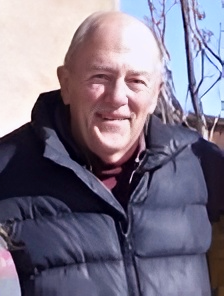
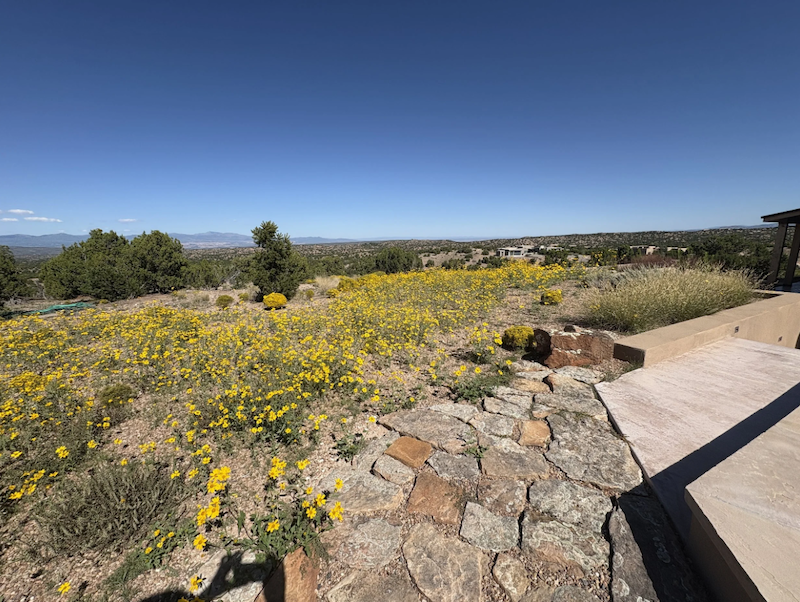
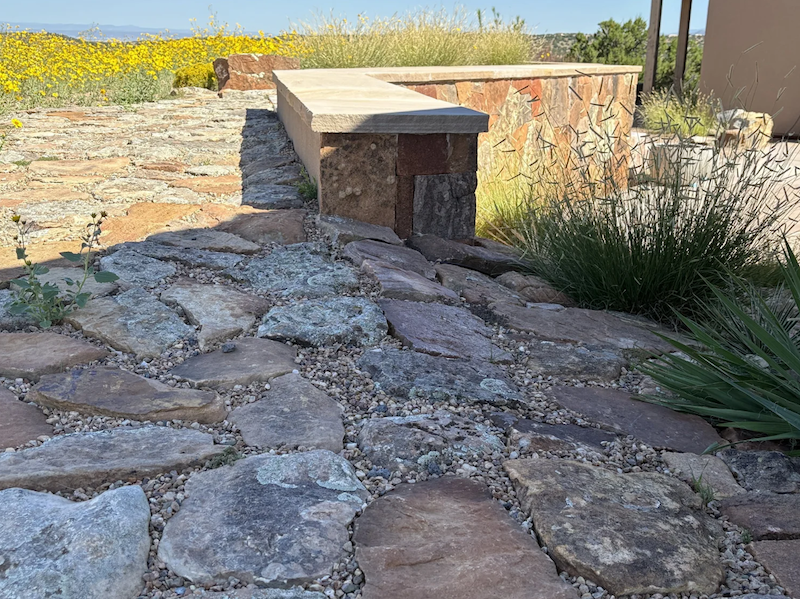
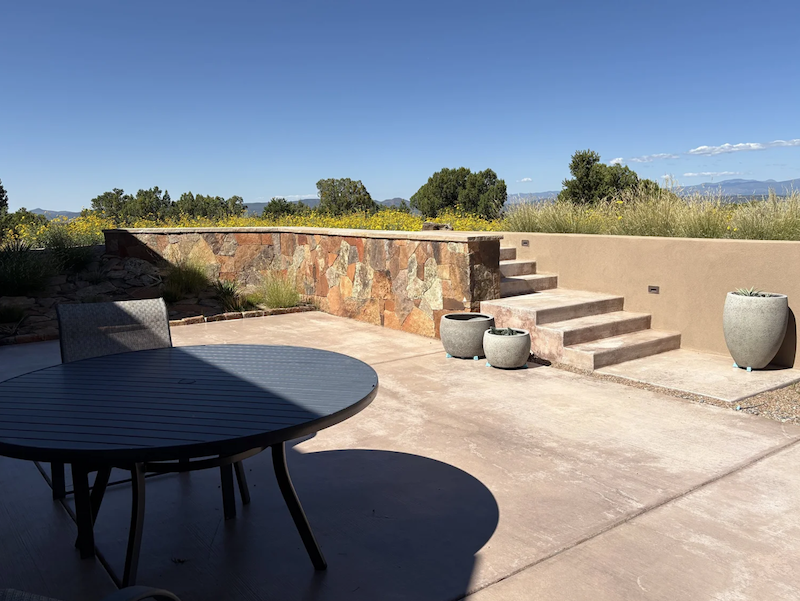
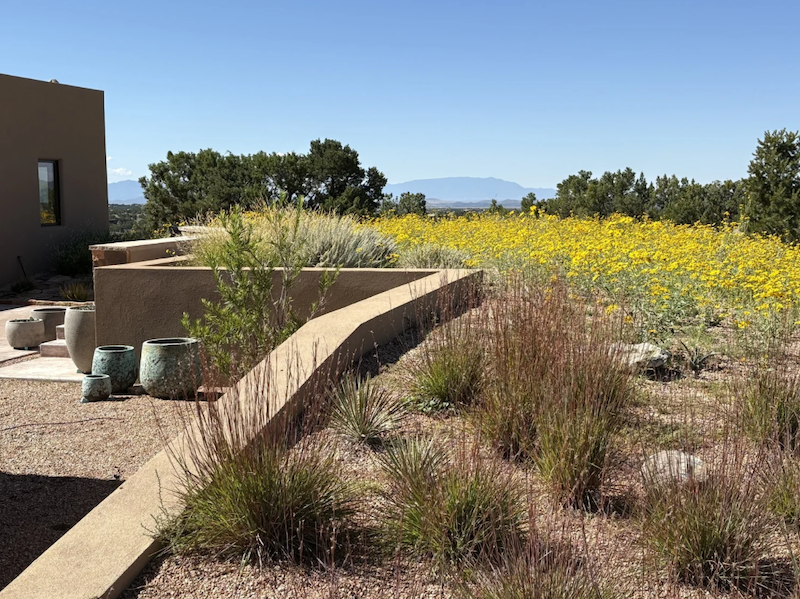

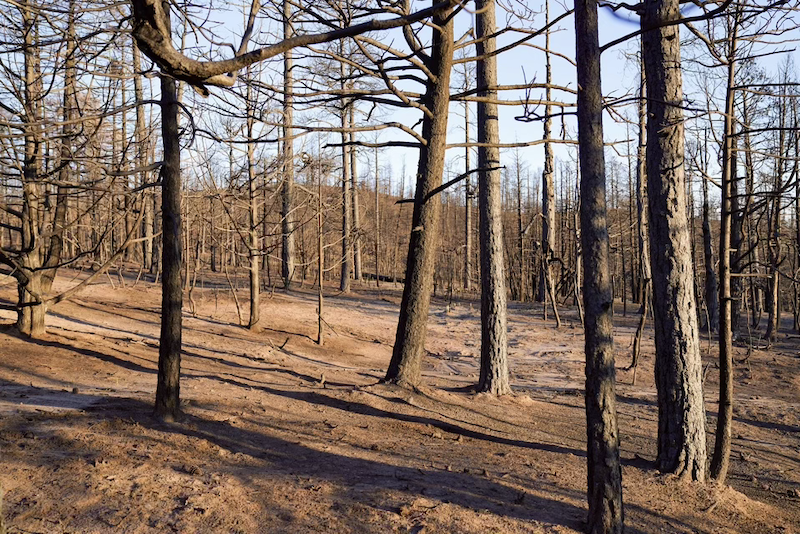
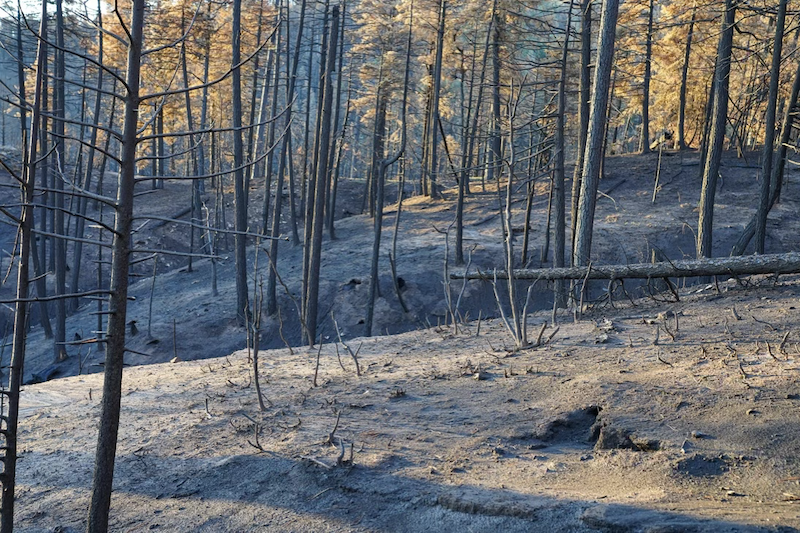
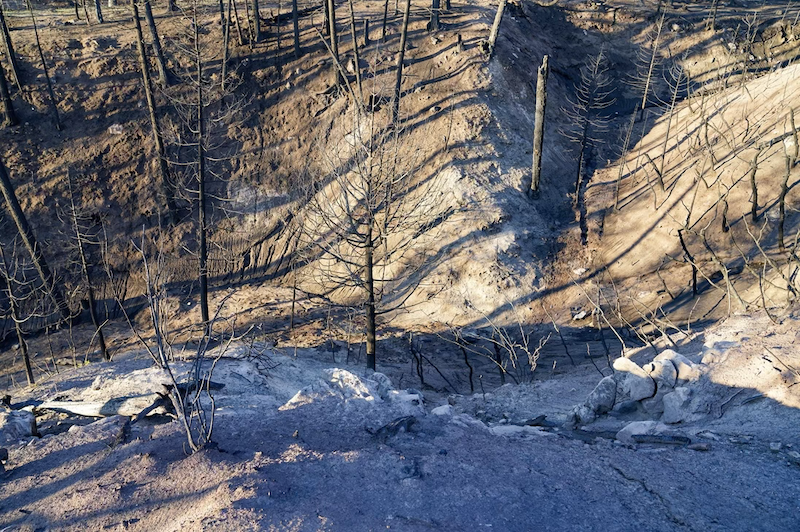

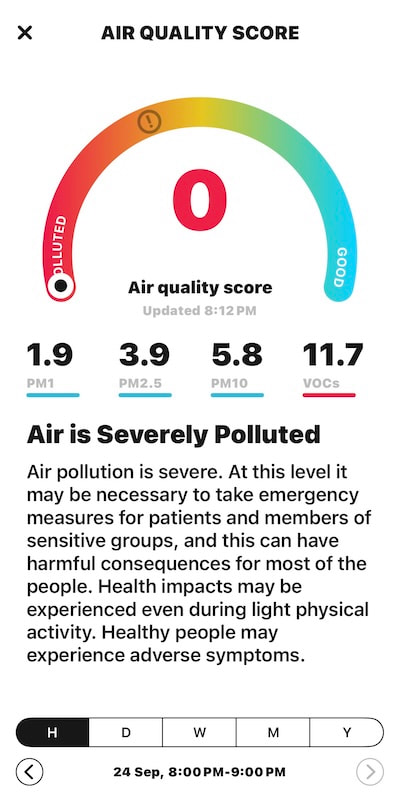
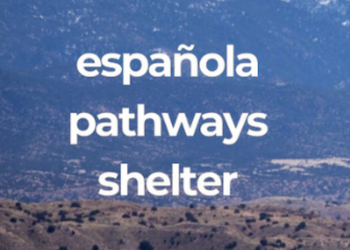
 RSS Feed
RSS Feed